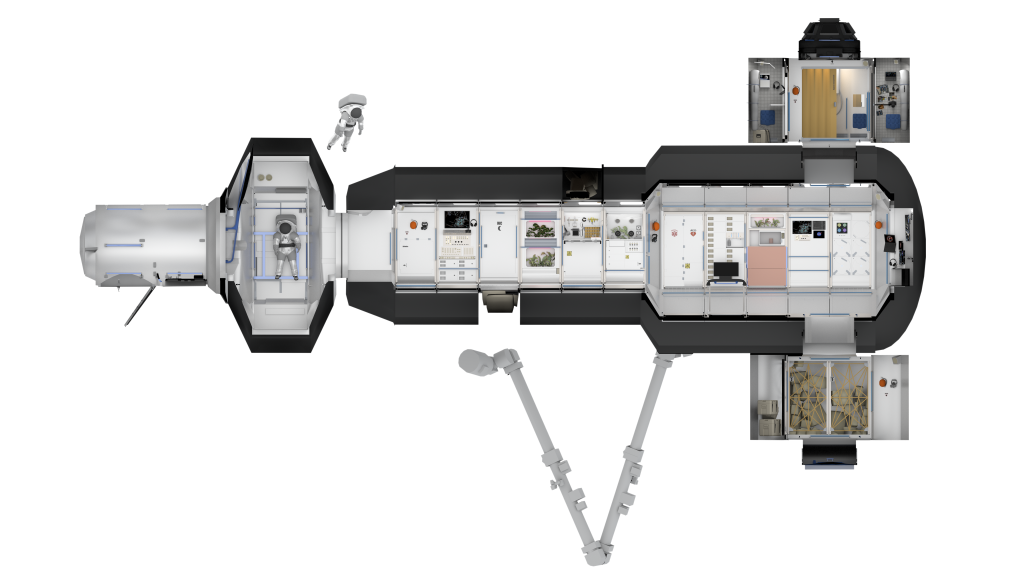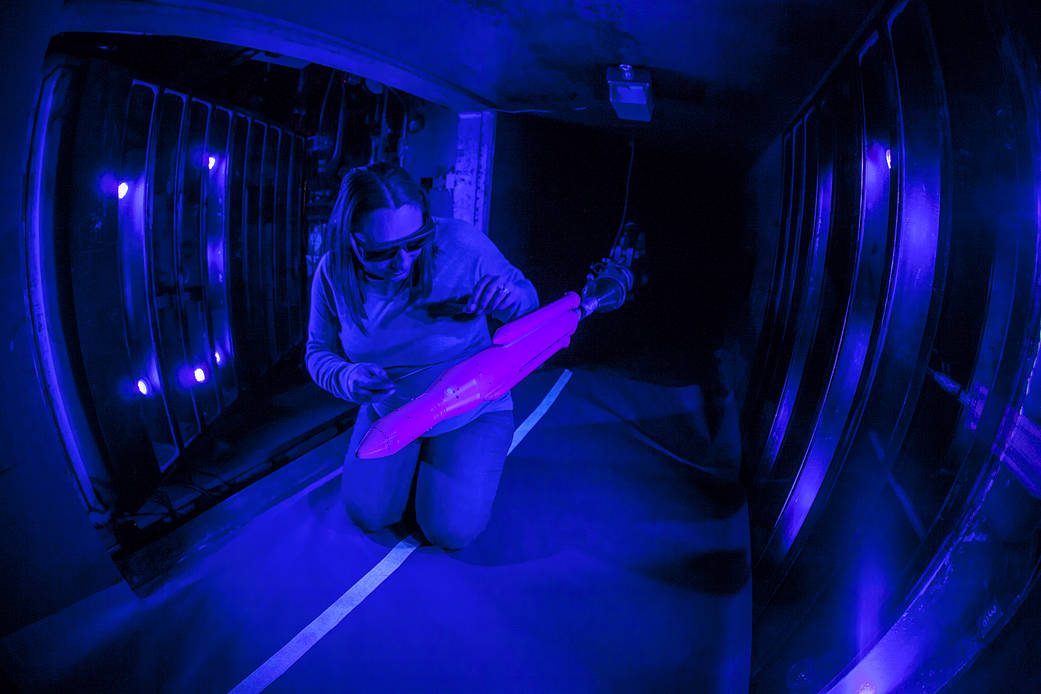A Space Launch System (SLS) rocket model is prepped for wind tunnel testing by Courtney Winski, aerospace engineer, at the Unitary Plan Wind Tunnel at NASA’s Langley Research Center in Hampton, Virginia. The pink pressure-sensitive paint on the 0.8 percent scale model emits a bright crimson glow when reacting with oxygen in the presence of high-pressure airflows. This test allows engineers to understand changing pressures exerted on the rocket during a launch.
This round of ascent testing is latest in a series of wind tunnel tests for the rocket that will launch NASA’s Orion spacecraft on missions to the Moon. Their first integrated test flight, known as Exploration Mission-1, is targeted for 2020, followed by a test flight with crew in 2022. “Testing needs to happen in all potential rocket configurations and all stages of launch to know how the rocket will behave,” said Jeremy Pinier, aerosciences team lead at Langley.
As they test different configurations of the rocket designed for crew and cargo, researchers are learning more about the structure and properties of the rocket NASA is developing for exploration of the Moon and Mars. This particular test was one of the first in a series with the cargo configuration of SLS, which can send more than 26 metric tons (57,000) pounds to lunar orbit. The ability to carry large cargos to the Moon is necessary for human exploration missions.
Image Credit: NASA/David C. BowmanCaption: Andrea Lloyd, NASA’s Langley Research Center


























